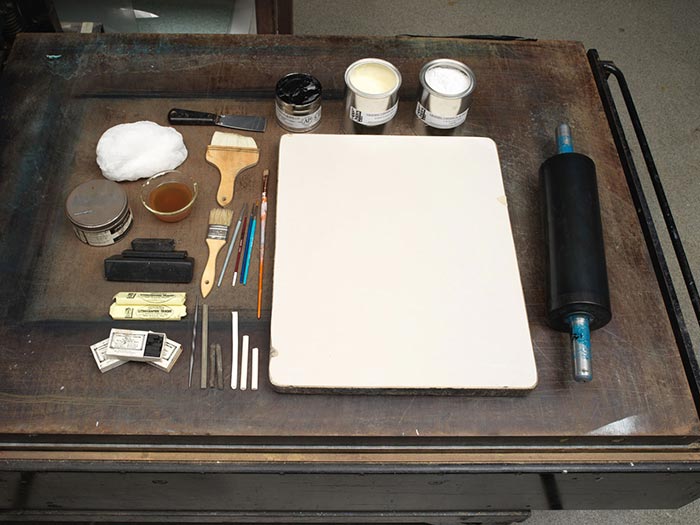The Wild West in Darktown: Attack on the Deadhead Coach
Publisher Currier & Ives American
Not on view
The late nineteenth-century Darktown prints by Currier & Ives depict racist stereotypes that are offensive and disturbing. The Metropolitan Museum of Art preserves such works to shed light on their historical context and to enable the study and evaluation of racism.
In this print, a crowded stagecoach --adorned with red panels and red-rimmed wheels and pulled by a four-donkey team--races through a town street (heading from center to lower left), trailing large clouds of dust. Its driver is a large Black (African American) man, wearing a wide-brimmed cowboy hat, who raises his right arm to snap a large whip over the donkeys. A Black boy, looking ill, sits beside the driver. Black men ride on top of the stagecoach and within it; while they wildly carouse, some fire pistols at the crowd of townsfolk standing behind fences in front of their houses lining both sides of the street. A cowboy on horseback (left of center middleground) rides alongside the stagecoach; his hat flies in the air behind him. The townspeople on both sides of the street appear to be shouting angrily with upraised fists at the rowdy men. One woman (towards the right) raises her broom at them. In front of her, a small child tries to get out of the road, as does a lone chicken (foreground, near lower right). A tossed cat (dead?) is in midair (upper center). The title is imprinted in the bottom margin.
Nathaniel Currier, whose successful New York-based lithography firm began in 1835, produced thousands of prints in various sizes that together create a vivid panorama of mid-to-late nineteenth century American life and its history. People eagerly acquired such lithographs featuring picturesque scenery, rural and city views, ships, railroads, portraits, hunting and fishing scenes, domestic life and numerous other subjects, as an inexpensive way to decorate their homes or business establishments. As the firm expanded, Nathaniel included his younger brother Charles in the business. In 1857, James Merritt Ives (the firm's accountant since 1852 and Charles's brother-in-law) was made a business partner; subsequently renamed Currier & Ives, the firm continued until 1907.

